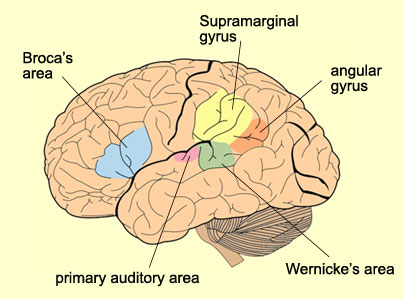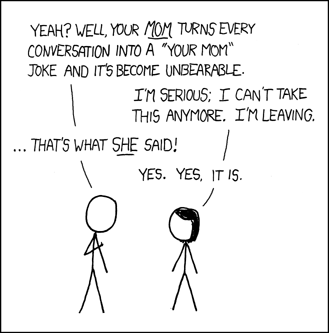Welcome to a short series on a developmental disorder that not many people know about, and not many researchers spend much time, well, researching. Numbers and the Brain
Numbers and the BrainIn his 1933 novel Miss
Lonelyhearts, Nathanael West wrote, “Numbers constitute the only universal language.” Humans have a natural tendency to classify and quantify objects and events around them. Numbers and arithmetic are so basic to the human experience that children develop a basic sense of number and mathematical relations without explicit instruction (
Bjorklund, 2005, p. 404).
In the 1960s, Piaget proposed a three-stage sequence to number acquisition. In stage one, children do not understand one-to-one correspondence of objects – that is, when shown an array of five white jelly beans, they cannot match them to the proper number of black jelly beans. In stage two, an instinctive one-to-one correspondence emerges where children begin to grasp the fundamental idea of equivalence in number, but only if the two sets of objects are equal in all dimensions (number and density, for example). The third stage child understands equivalence more fully, not being fooled by a change in density to think that the number of jelly beans has changed.
A biologically-based evolutionary model for the number sense has been offered, which offers a convincing explanation for the acquisition of number sense without instruction, by children all over the world. Animals of various species have been demonstrated to have basic
numerosity perception and elementary arithmetic abilities, including rats, pigeons, raccoons, dolphins, parrots, monkeys, and chimpanzees. In one surprising study described by
Dehaene (1998), a parrot was even taught to recognize and produce a large vocabulary of English words including the first few number words. The animal could answer questions as complex as ‘How many green keys?’ when confronted with multiple objects of various colors.
Dehaene also described a study by
Meck and Church in which they trained rats to respond differentially to either 2 or 4 sounds or light flashes. The rats trained initially on only auditory or visual discrimination later generalized to tasks in which auditory and visual stimuli were combined, showing that they had a basic number sense.
Similarly, in a series of experiments involving dot arrays,
Spelke (2000) and
Xu demonstrated that six-month-old infants were able to discriminate between eight and sixteen, and between sixteen and thirty two. However, the infants did not discriminate eight dots from twelve or sixteen from twenty four. Starkey and Cooper demonstrated that infants were unable to discriminate four from six dots, in a similar experiment. The findings suggest that infants are sensitive to 2:1 ratios such as 16:8 and 32:16, but not 3:2 ratios such as 12:8 or 6:4.
A second set of experiments by
Spelke and Lipton sought to determine whether this finding was limited to the visual field, or also applied to auditory input. Infants heard sequences of sounds from a right-side and left-side speaker. The infants were again sensitive to 2:1 ratios (16 and 8 sounds) but not 3:2 ratios (12 and 8 sounds). These findings suggest that representations of approximate
numerosities are independent of sensory modality or stimulus format.
In a third set of experiments,
Spelke and
Xu repeated their dot-array experiments with smaller numbers of dots: arrays of either one versus two dots, or two versus three dots. The findings of these studies indicated that although infants treat large numbers of visible items as a set, they appear to treat small numbers of visible items as individual objects, and not as a set of objects with a cardinal value.
A series of further studies by
Spelke and others confirms an upper limit of three on core knowledge systems of
numerosity. For example, Wynn showed that around age 3, children can differentiate “one” from “many.” Less than one year later, after the acquisition of “three”, children appeared to be able to differentiate just about any number from any other, with no real upper limit.
Most children eventually acquire four primary mathematical abilities without explicit instruction: (1)
numerosity, which is the ability to determine the quantity of items in a set without counting; (2)
ordinality, which is a basic understanding of more than and less than relationships between sets of objects; (3) counting, which is the ability to determine how many items are in a set using a system of symbolic representation – a
preverbal counting system has been observed, as well as a language-based system; and (4) simple arithmetic, which is an understanding of and sensitivity for increases (addition) or decreases (subtraction) from a set (
Geary, 1995).
Unlike basic number abilities, calculation ability represents an extremely complex
cognitive process. It has been understood to represent a “
multifactor skill, including verbal, spatial, memory, and executive function abilities” (
Ardilla &
Rosselli, 2002, p. 179). The loss of the ability to perform calculation tasks resulting from a cerebral pathology is known as
acalculia or acquired
dyscalculia, which is an acquired disturbance in computational ability. The developmental defect in the acquisition of numerical abilities, on the other hand, is usually referred to as developmental
dyscalculia or
dyscalculia (
Ardilla &
Rosselli, 2002).
References:
Ardilla, A., &
Rosselli, M. (2002).
Acalculia and
Dyscalculia.
Neuropsychology Review, 12(4), 179-231.
Bjorklund, D.F. (2005). Children's thinking: Cognitive development and individual differences, 4
th edition. Belmont, CA: Wadsworth.
Dehaene, S.,
Dehaene-
Lambertz, G., & Cohen, L. (1998). Abstract representations of numbers in the animal and human brain. Trends in Neuroscience, 21, 355-361.
Geary, D.C. (1995). Reflections of evolution and culture in children’s cognition. American Psychologist, 50(1), 24-37.
Spelke, E.S. (2000, November). Core knowledge. American Psychologist, 1233-1243.










